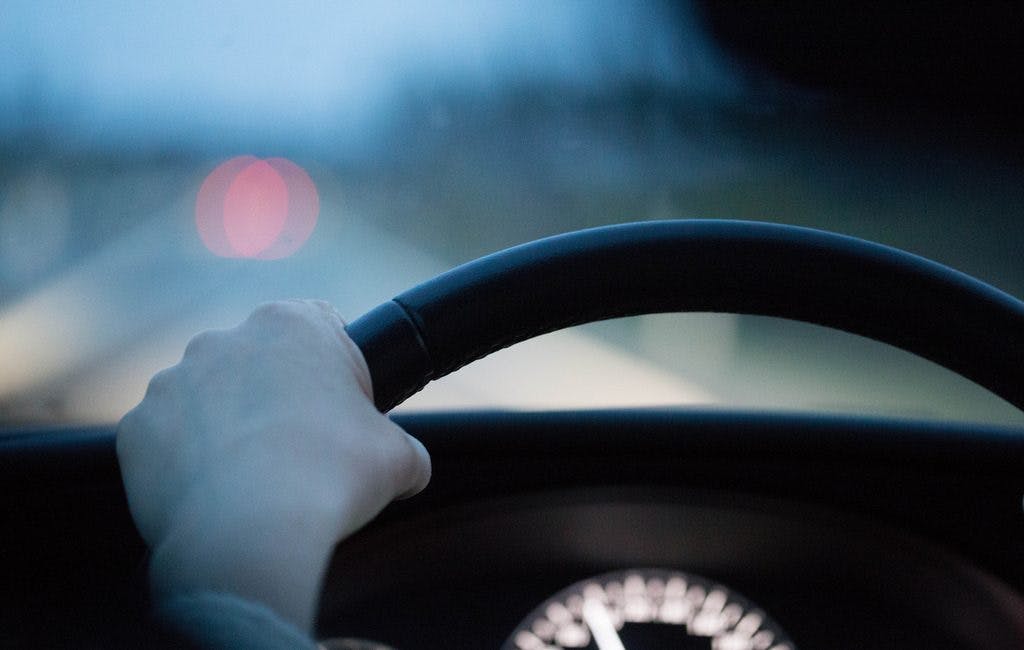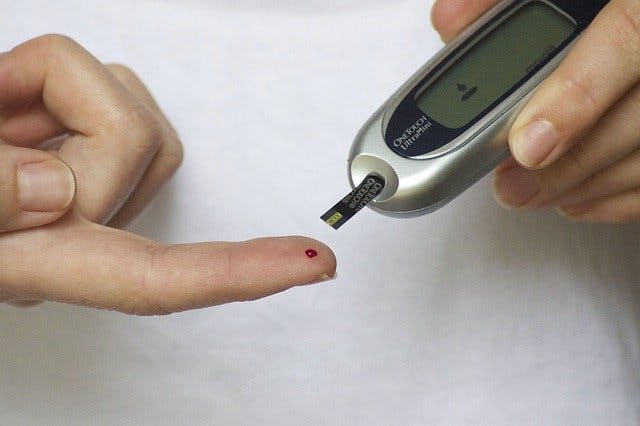
Like many other medical conditions, having diabetes can make driving that bit more of a challenge. Your condition can affect your driving in a few ways, whether through hypoglycaemic episodes or other complications. And, whether you’ve recently been diagnosed, or are just starting to think about learning to drive, you’ve probably got some questions. How can you best manage your diabetes on the roads? What are the rules for driving and blood sugar? Do you need to tell the DVLA, and are you ever in danger of losing your licence?
Our guide will help you get to grip with which rules are relevant to you, so that you can stay safe and on the right side of the law. We’ll take a look at everything from when you should check your blood glucose levels to what you should carry in your car.
So let’s dive right in: here’s everything you need to know about diabetes and driving.
Please note: this information refers to car and motorbike licences only.
Glossary
Hypoglycaemia: Where your blood sugar (glucose level) drops below normal.
Hypo: A hypoglycaemic episode, where you may experience symptoms like shakiness, confusion and a fast heartbeat.
Severe hypo: A more dangerous hypoglycaemic episode, where you require another person to help you treat it.
Can you drive if you have diabetes?
It's good news on this front: most people with diabetes are indeed allowed to drive. If you are able to manage your condition with medication, diet, or a combination of the two, chances are that you’ll have no problem getting and keeping your licence. Depending on different factors, like how you treat your condition, you may be granted a full driving licence (one that lasts until you’re 70), or a medically restricted licence. These vary in length, but you will have probably have to re-apply every 1, 2 or 3 years.
Having a licence doesn't absolve you from personal responsibility, though. If you become hypoglycaemic while you're driving, you won't be able to stay in full control of the car. That obviously poses a huge risk to yourself and other road users. To mitigate this, the DVLA does impose some extra conditions on diabetic drivers. We'll get into the nitty gritty a bit later, but basically you have to plan ahead, remain vigilant about your blood glucose levels and be aware of any symptoms associated with low blood sugar. If you've lived with diabetes for any length of time, these are all things that will be part of your day-to-day life already.
Do you have to inform the DVLA that you're diabetic?

Some people with diabetes will need to tell the DVLA about their condition, but others won’t. It all depends on whether your diabetes treatment puts you at risk of having a hypo. If you're thinking about learning to drive, or have recently been diagnosed with diabetes, talk to your doctor about whether you fall into this category. Generally speaking, this rule applies to you if you're on insulin or some tablets. If you treat your diabetes with diet and lifestyle, then you don't need to tell the DVLA.
Insulin
If you're on insulin—or planning to be on insulin—for longer than 3 months, you have to tell the DVLA about your diabetes. This guidance gives some leeway to anyone taking insulin for a short period, which is sometimes the case for those with gestational diabetes (associated with pregnancy) or following a heart attack. If that’s you, you can carry on driving and you don’t need to tell the DVLA. However, if your treatment ends up lasting longer than planned, or if you’re still on insulin more than 3 months after having a baby, you’re required to let the licensing agency know.
Insulin users are only able to hold medically restricted driving licences, as the DVLA want to keep a close eye on any changes to your condition.
Other medications
If you treat your diabetes with tablets, these may or may not increase your risk of having a disabling hypo. Seek advice from your doctor or nurse about this: they'll be able to tell you more about your specific medication. If you are required to let the DVLA know about your treatment, they may issue you with a full licence or a medically restricted one. It depends on what your healthcare professionals say about your level of risk of severe hypos.
Diet and lifestyle
For those of you able to manage your condition with diet and lifestyle changes alone, you don't need to tell the DVLA that you suffer from diabetes. You aren't at risk of having severe hypos, so you'll be granted a full driving licence with no restrictions.
Regardless of your treatment plan, there are some other instances where you need to tell the DVLA. Let them know if:
- Your doctor says you are at risk of having, or developing, disabling hypos
- You develop impaired awareness of hypoglycaemia, where you struggle to recognise the symptoms of low blood sugar
- Your diabetes causes complications (e.g., with your eyesight or circulation) that affect your ability to drive safely
- You have one episode of severe hypoglycaemia when you're driving
- You experience two severe hypos, while awake, during a 12-month period
A bit later, we'll discuss how some of these circumstances can affect your licence.
What blood sugar level is safe to drive?

Not everyone with diabetes needs to check their blood glucose level. However, if you take blood sugar readings as part of your normal diabetes management, you must always check your levels within 2 hours of driving anywhere. It doesn't matter how short your journey is; you need to make sure you're safe to get behind the wheel. There’s no upper legal limit for your blood sugar, but they must be at least 5mmol/l for driving.
If your blood sugar is between 4 and 5mmol/l, eat a snack before starting to drive. You must not drive if your readings are 4mmol/l or under. If they are, treat your diabetes and make sure your levels have increased to 5mmol/l before you set off.
Glucose readings aren’t the only thing you have to bear in mind though. If you are experiencing any symptoms of a hypo, you shouldn’t drive, even if your glucose test says otherwise. If you are experiencing symptoms, but your glucose monitor says your levels are safe, you need to confirm the reading with a finger prick test.
Checking your blood glucose level when you’re driving
If you’re going on a long journey, you have to check your blood sugar level at least every 2 hours—starting from the time you took readings before you set off. If you’re going on several shorter journeys within a short period of time, you don’t need to check your glucose level before each drive, but you should still make sure you check them every 2 hours.
Even if you use a real-time glucose monitoring system or a flash glucose monitoring system, you still need to make sure you have a glucose meter and blood glucose strips with you in the car. Keep evidence of these readings, in case you have an accident and need to prove that your blood sugar was at a safe level to drive.
If your readings fall below 4 at any time on your journey, or you feel hypoglycaemic, then you need to stop and treat your hypo,
What to do if you have a hypo while driving

It’s against the law to carry on driving during a hypo, because you could cause an accident. So, as soon as you start to experience symptoms of low blood sugar, find a safe place to pull over and stop the car. You should take the keys out of the ignition, and if possible move out of the driver’s seat. That way, you can’t be deemed in control of the vehicle—which could lead to prosecution, since you’re not in a fit state to drive.
Then you need to treat your hypo. Ideally you should eat fast-acting carbs, like glucose tablets or sweets, followed by longer-acting carbs. Once your blood sugar has returned to a minimum of 5mmol/l, you need to wait a further 45 minutes before starting the engine and driving off. That’s the time it takes for your concentration to return to normal, so it's unsafe to continue driving any earlier.
Checklist: what to take with you in the car
- Blood glucose meter and strips
- Glucose tablets or sweets within easy reach
- Snacks
- Some form of diabetes identification (in case you have an accident)
- Insulin / other diabetes medication
Are you at risk of losing your licence if you have diabetes?
We've already seen that you have to tell the DVLA about particular experiences to do with your diabetes. In some of these instances, your licence may be revoked, or taken away, for a period of time—usually a few months. Here's when that would happen:
• If you have more than one episode of severe hypoglycaemia, while you’re awake, within a period of 12 months
• If you have a severe hypo while you’re driving at any time
• If you have impaired awareness of hypoglycaemia; where you find it difficult to identify the symptoms of low blood sugar
If any of these scenarios are true for you, stop driving immediately and tell the DVLA. After your licence is revoked, you will have to wait until 8 weeks before the revocation period ends until you can re-apply for your licence. You will be granted a new licence if the DVLA are satisfied that you no longer pose a heightened risk on the roads.
✗ Don't avoid telling the DVLA about any of these circumstances just because you want to keep your licence. Your licence and insurance will be deemed invalid if you haven't followed the rules.
You could also be face a fine, prosecution or lose your licence if:
- You carry on driving during a hypo
- You are caught being distracted at the wheel, for example by checking your glucose monitor while driving
Learning to drive with diabetes
Before you start learning to drive, you’ll need to get your provisional licence. On the application form, you need to state that you have diabetes, and then go into further detail about how you treat your condition.
- Don’t be afraid that this will affect your ability to start driving. If you don't tell the DVLA, you can be fined £1,000. And anyway, most people with diabetes are able to get their driving licence no problem!
- Do be aware that it may take a little longer to get your provisional licence approved and sent to you.
When you’re just starting out, you need to get into the habit of taking your blood sugar level readings before you drive, every time you drive. It’s a good idea to tell your driving instructor about your diabetes, so that they’re aware of your situation, and in case you ever start to experience a hypo during your lessons.
FAQs
1. What happens if I have an accident and my blood sugar drops?
If you’re involved in an accident, it’s common for your blood sugar to drop. It’s important that you are able to prove, as much as possible, that your diabetes did not affect your driving or cause the accident. That’s why you need to keep evidence of your finger prick tests.
When emergency services arrive at the scene, they will take a glucose reading. However, some time may have passed before they arrive, which may mean your blood sugar is lower than it was immediately after the accident. Ask them to provide you with a receipt to say when tested your blood sugars.
2. Do I need to tell my car insurance provider that I have diabetes?
Yes—you always have to disclose your diabetes to your insurer, even if you don’t have to tell the DVLA. If you don’t, your insurance can be deemed invalid, which means it won’t cover you if you have an accident. However, they should not charge you any more because of your diabetes: the DVLA have already assessed your risk factor, and deemed it acceptable for you to be driving.
3. What if my diabetes causes other health problems?
As well as the immediate effects of hypoglycaemic episodes, diabetes can also cause a number of other complications. Some people experience a deterioration in their eyesight. You always need to make sure that you can meet the sight requirements for driving. That means maintaining an adequate field of vision and being able to see a post-2001 number plate from 20 metres away.
If you experience other issues, such as with your circulation, you may only be able to drive a car that has been adapted. This might be an automatic vehicle, or one with hand controls. If that's the case, you'll need to apply for a driving licence that reflects this limitation.
So, hopefully you're clear on all things diabetes and driving! Now see if you're ready for the roads by checking your road sign knowledge.
Subscribe for driving advice, offers & more
We'd love to let you know about our courses, news and offers via email. You may unsubscribe at any time.
Star Genie Limited trading as PassMeFast. Company number 10093359
Copyright © 2024 owned by Star Genie Limited
PassMeFast, Blue Tower, MediaCityUK, Salford, M50 2ST

